I spent several years studying ancient okinawan manuscript Bubishi. This article is part 2. of my interpretation and bunkai applications. At least it shows diversity of original okinawan self defense method that will later be famous under new name – “Karate”.
 FUMI KIRI
FUMI KIRI
basic throw
This is basic throwing technique. Gichin Funakoshi used term “byubodaoshi” (Karate do kyohan). Similar drawing also exists in Bubishi.

Point here is to sweep opponent’s leg. You can perform this technique in several different ways – you can push his chin upward, or grab his throat, or you can grab his shoulder and use your elbow to smash his face.
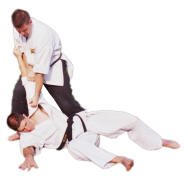
Tips: Once when opponent is down, you can knockout him with tetsui uchi (hammer strike). it is very important to hold opponents arm, so that you can control him.
Reference kata: Anan, Passai, Kushanku
 UDEWA
UDEWA
“grab leg” take down
There is exact drawing of this technique in Bubishi.

Easiest way to drop opponent down on a floor is to grab his leg. You should grab his ankle and push and twist his knee. Udewa is good response when someone tries to grab you.
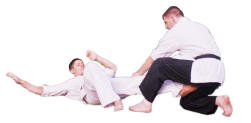
Tips: You should always watch his knee. :)
Reference kata: Sanseiru (Uechi ryu)
 TSUBAMAGAESHI
TSUBAMAGAESHI
make him fly like a swallow
Gichin Funakoshi named this technique “flying swallow”, it is very similar to aikido kote gaeshi (wrist lock). However, okinawan karate has other version of this technique. You can throw someone if you grab his arm and suddenly turn and sunk down.
This technique requires a speed. You can use this throw as defense against club attack or knife thrust.

Tips: Don’t use your hands. If your feet move correctly, very little power is necessary to drop down opponent.
Reference kata: Kushanku
 UNSHU GERI
UNSHU GERI
“scissors” take down
This technique is true gem of Okinawa karate. It is preserved in Unshu kata, which is passed to us by great master Seisho Arakaki.

You have to be very agile to perform this kick well. Sudden fall is used to avoid opponent’s attack. Kick is always aimed at opponents groin. Sweetest part is that you can use returning path of the kick (hiki-ashi) as “scissors” take down.
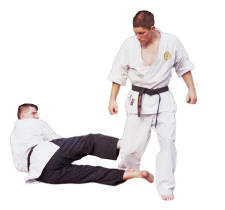 Tips: You can use unshu geri to defend when you are on the floor. Use kick to deflect opponent leg.
Tips: You can use unshu geri to defend when you are on the floor. Use kick to deflect opponent leg.
Reference kata: Unshu
 KINTEKI GERI
KINTEKI GERI
groin kick as defense vs. kick
When someone tries to kick you, don’t try to block it. Offence is best defense, so kick him into groins.
Kinteki geri is performed always with your front leg. It is fast and accurate, whipping kick. Step a side and parry opponent’s kick with gedan haito uke.
Tips: Don’t try to use too much force, because that will slow down your kick. You don’t need too much force to kick someone in groin. You only have to be very quick and accurate.
Reference kata: Chinto, Anan
 TOBI GERI
TOBI GERI
flying kick
Tobi geri is found in many forms of Okinawan karate. This is very effective technique. All kicking techniques of Okinawan karate are used below chest level. However, this kick is aimed to opponent head. You can use tobi geri when you are in corner or when your back is against a wall.
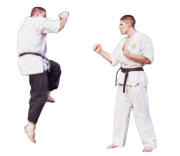
Tips: Technique is consisted of two front kicks. First kick is used as faint and as an effective way to cover long distance. Second kick is done in the air.
Reference kata: Kushanku, Chinto
 GEDAN UCHI
GEDAN UCHI
knock out
This technique is part of prime sequence in kata Kushanku. Point here is to knock out opponent who is already on the ground. After throwing technique, finish with powerful strike to the face. Use your body weight to amplify power of the strike.
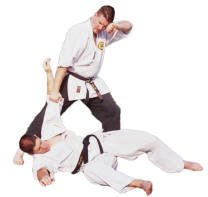
Tips: Your back should be always straight.
Reference kata: Kushanku
 MOROTO TEISHO UCHI
MOROTO TEISHO UCHI
ear smasher
This is simple, but effective technique. When confronted with someone who is trying to grab you, quickly smash his ears with both palms. Opponent’s ear drums will be very hurt.
This technique is also illustrated in Bubishi.

Tips: Grab opponent’s hair and neck and throw him on the ground using head manipulation.
Reference kata: Seisan
 EMPI UCHI
EMPI UCHI
elbow smash
This is very elbow smash variation.
Elbow strikes are very powerful. It is used to smash opponents face or to break his ribs.

Tips: You can smash his face with hiraken (front knuckles) or poke his eyes with kakushite (cranes beak). It is simple elbow comes up, then hiraken comes down. Uechi ryu uses this combination.
Reference kata: uechi seisan, sanseiru
 USHIRO TEISHO UCHI
USHIRO TEISHO UCHI
palm smash
Palm can be very useful when someone tries to grab you from behind. Simply, step a side and smash his groin with a palm. Use your other hand to soften his hold. This technique is also illustrated in Bubishi.

Tips: Instead of smashing, you can grab and tear attacker testicles.
Reference kata: Seisan, Kushanku
 KINTEKI TSUKI
KINTEKI TSUKI
drop down and punch
Sometimes, when attacker tries to grab, punch or push you, quickly drop down on your knee and punch him into groin. This is true streetwise technique.

Tips: Use your other hand to protect your face against his punch or against knee.
Reference kata: Chinto
 TEISHO UCHI
TEISHO UCHI
face slap
This technique is very basic in shorin ryu. Use your front hand to strike attacker face. Step a side (tenshin) into cat stance (neko ashi) and parry with your back hand.
Instead of palm, you can easily use knife hand (shuto) and strike his throat.
Tips: Continue with drop down (osoto gari) or with elbow lock.
Reference kata: Pasai
 KINTEKI TSUKI II
KINTEKI TSUKI II
grab and tear
You should always be aware of close distance. Attacker is usually always stronger then you and wrestling is his territory. In shorin ryu, you always avoid attacker’s attempts to grab you. However, sometimes you don’t have a choice. If this is a case, then you should try to grab attacker’s genitals so that he has to let you go.
Tips: You can combine use of elbow or uraken with this technique.
Reference kata: Chinto, Pasai
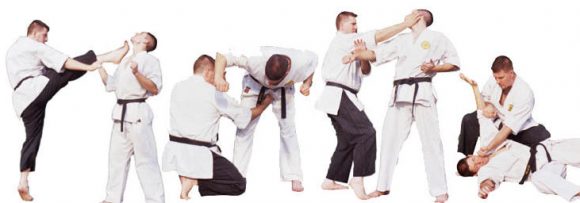
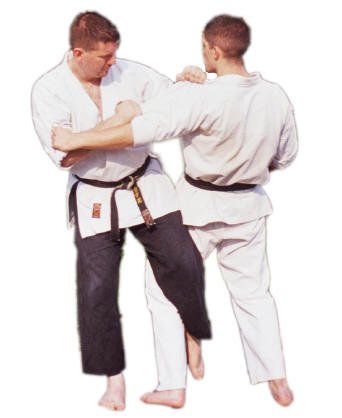 FUMI KIRI
FUMI KIRI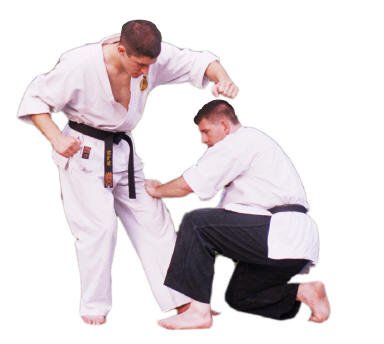 UDEWA
UDEWA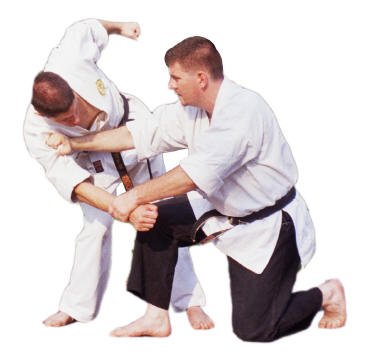 TSUBAMAGAESHI
TSUBAMAGAESHI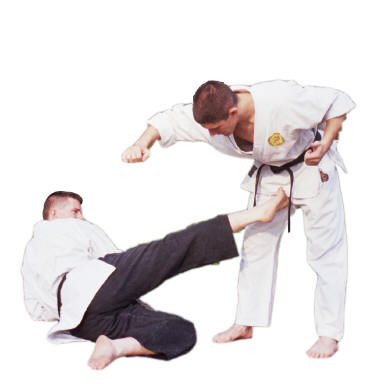 UNSHU GERI
UNSHU GERI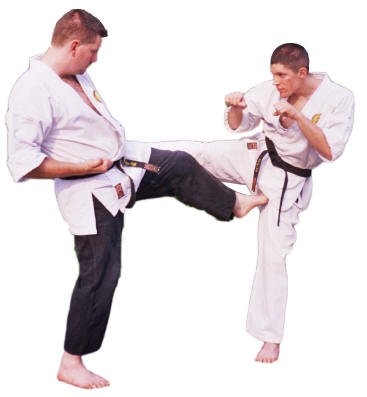 KINTEKI GERI
KINTEKI GERI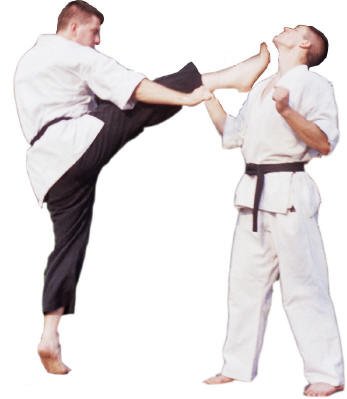 TOBI GERI
TOBI GERI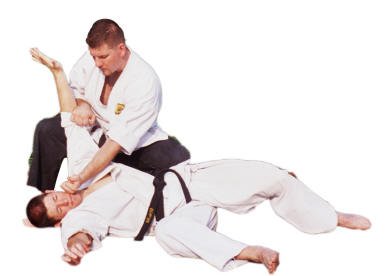 GEDAN UCHI
GEDAN UCHI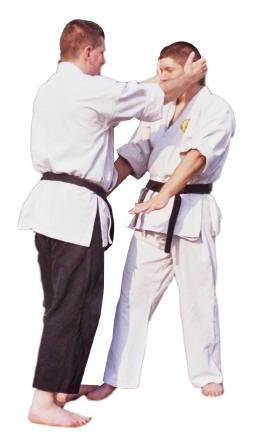 MOROTO TEISHO UCHI
MOROTO TEISHO UCHI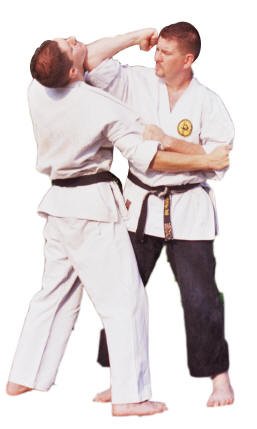 EMPI UCHI
EMPI UCHI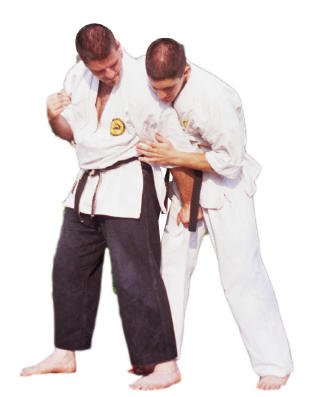 USHIRO TEISHO UCHI
USHIRO TEISHO UCHI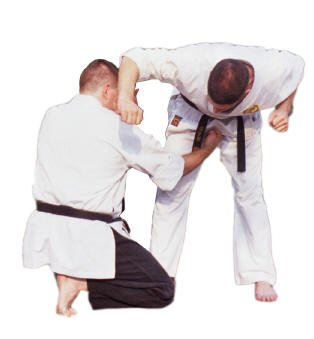 KINTEKI TSUKI
KINTEKI TSUKI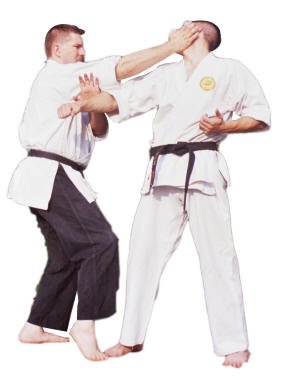 TEISHO UCHI
TEISHO UCHI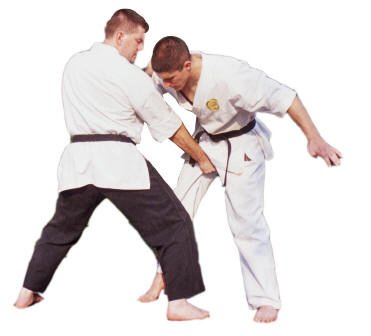 KINTEKI TSUKI II
KINTEKI TSUKI II







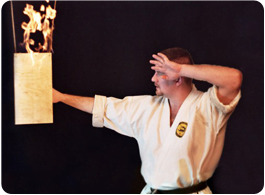
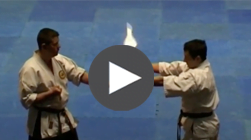
Great! Thank you very much!
I always wanted to write in my site something like that. Can I take part of your post to my blog?
Of course, I will add backlink?
Regards, Timur I.